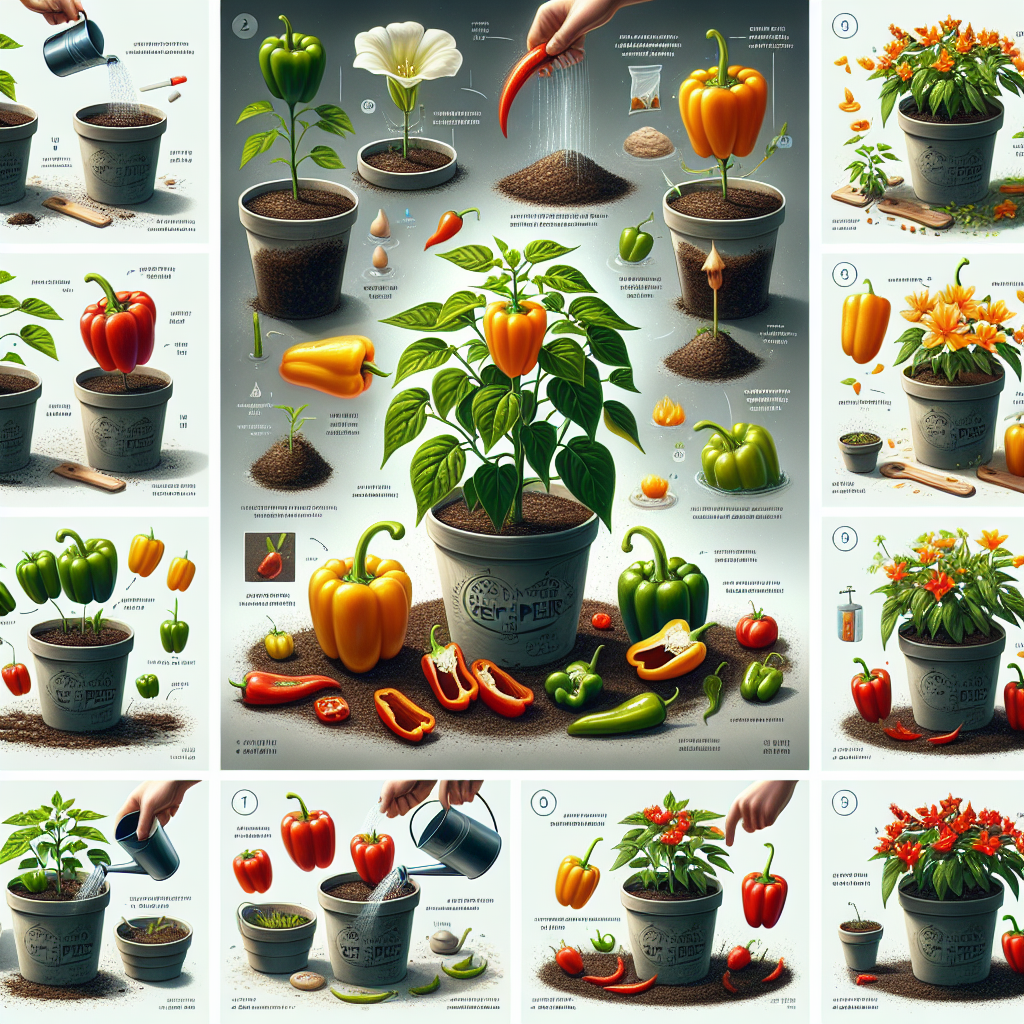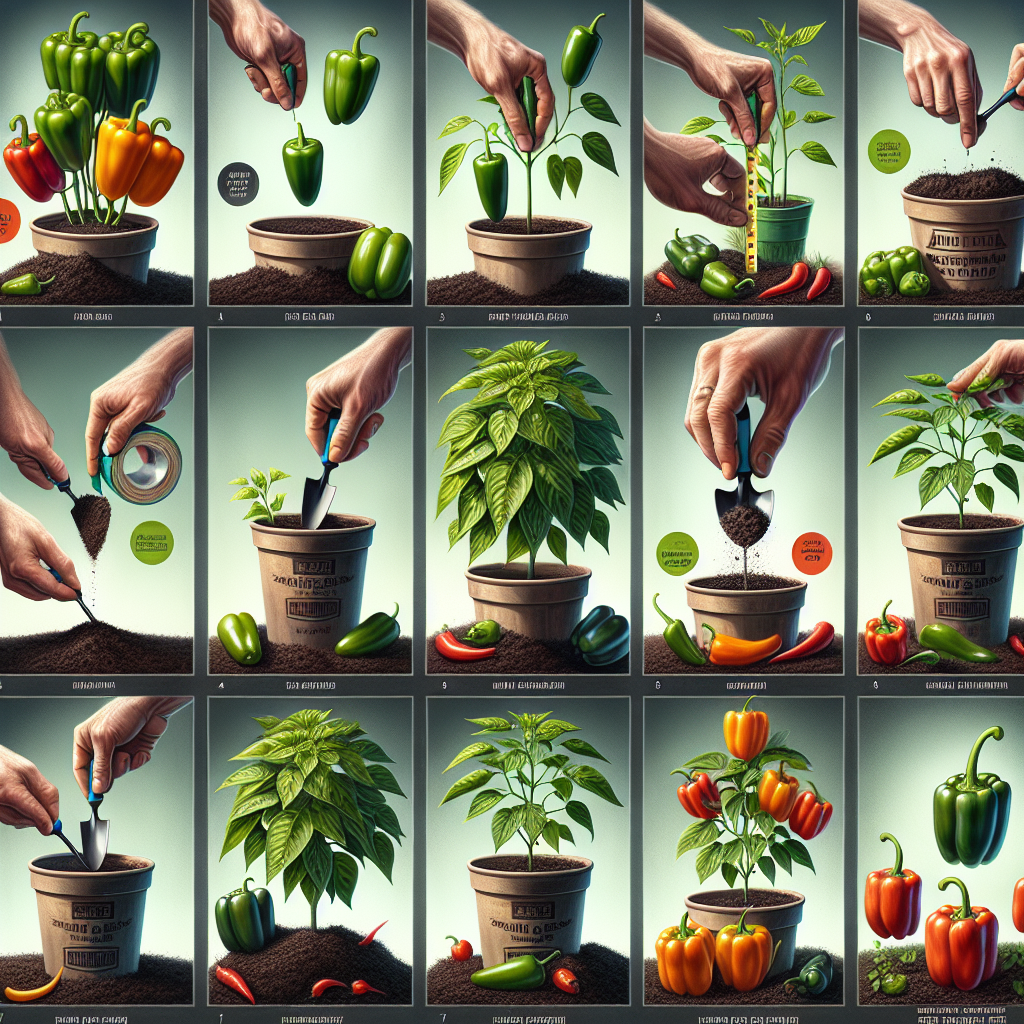Growing Peppers in Containers: A Complete Guide for Success
Peppers are a versatile and delicious addition to any home garden. They come in various shapes, sizes, and degrees of spiciness, making them a perfect choice for those who love to add a little heat to their meals. While many people associate peppers with traditional garden beds, they can also thrive when grown in containers. Whether you have limited space or simply want to be able to move your plants around, growing peppers in containers can be both practical and rewarding. In this article, we will provide a comprehensive guide on how to successfully grow peppers in containers.
1. Choosing the Right Container:
When selecting a container for your pepper plants, it’s essential to choose one that offers enough space for the root system to grow. A 5-gallon pot is usually sufficient for most pepper varieties, but larger containers may be necessary for larger or multiple plants. Ensure the container has adequate drainage holes at the bottom to prevent waterlogging.
2. Selecting the Ideal Pepper Varieties:
There are numerous pepper varieties available, each with its own unique flavor and spiciness level. When choosing varieties for container gardening, consider selecting compact or dwarf varieties such as patio or mini bell peppers that are specifically bred for small spaces. These types of peppers have smaller root systems and are more suited for containers.
3. Soil Requirements:
The soil you use plays a crucial role in the success of your container-grown peppers. Use high-quality potting mix that is well-draining and enriched with organic matter like compost or aged manure. Avoid using heavy soils like garden soil as they tend to retain excess water which can lead to root rot.
4. Optimal Growing Conditions:
Peppers thrive in warm and sunny conditions with at least six hours of direct sunlight per day. Place your container in an area that receives ample sunlight while ensuring it’s protected from strong winds that can damage the plants. If your growing season is short, consider using a container with built-in casters, enabling you to move your peppers indoors during colder periods.
5. Watering and Fertilizing:
Proper watering is essential for the overall health of your pepper plants. Container-grown peppers require more frequent watering than those grown in the ground. Check the soil regularly and water when the top inch feels dry to the touch. Avoid overwatering as it can lead to root rot and other diseases.
Fertilizing your peppers at regular intervals will provide them with essential nutrients for healthy growth. Use a balanced fertilizer or a slow-release organic fertilizer according to the package instructions, ensuring not to exceed recommended dosage.

6. Care and Maintenance:
To encourage vigorous growth, pinch off any flowers that appear before your pepper plant has reached a substantial size. This will allow the plant to focus its energy on establishing a strong root system instead of producing fruit prematurely.
Pruning is also beneficial for container-grown peppers. Remove any damaged or diseased leaves, as well as any suckers that form in between leaf forks. Pruning helps improve air circulation and reduces the risk of fungal diseases.
7. Pest and Disease Management:
One of the advantages of growing peppers in containers is that it reduces the likelihood of pest infestations compared to traditional garden beds. However, aphids, spider mites, and caterpillars can still pose a threat. Regularly inspect your plants for signs of pests and use appropriate organic insecticides if necessary.
To prevent common diseases such as powdery mildew or bacterial wilt, avoid overcrowding your containers by planting only one or two pepper plants per pot. Provide adequate space between containers to ensure good airflow and maintain proper hygiene by removing any fallen leaves or debris promptly.
8. Harvesting Peppers:
The time it takes for peppers to mature varies depending on the variety planted, but most can be harvested within 60 to 90 days. Peppers are usually ready for picking when they have reached their full color and size. Use sharp scissors or garden shears to cut the peppers from the plant, making sure not to damage the stem.
Remember that peppers become hotter as they mature, so be cautious if you’re sensitive to spicy foods.
In conclusion, growing peppers in containers provides an excellent opportunity for those with limited space or a desire for mobility. By following these guidelines, you can create an ideal environment for your pepper plants and enjoy a bountiful harvest of fresh and flavorful peppers. Happy gardening!













